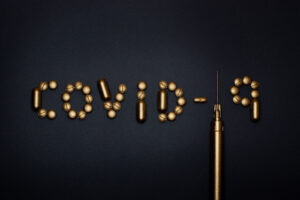The late “sleeping psychic” Edward Cayce once said, “Sound is the medicine of the future.” And it seems like his foresight may finally be coming true.
Music is healing. We turn to the power of sound during the best and worst of life’s moments, from a celebratory party to a breakup. It seems that no matter the situation, there is a song—or at least a sound—to complement the moment. It makes sense then that many are now turning to rhythms, vibrations and tones as a form of healing. It’s called sound therapy (also commonly known as gong therapy or gong meditation) and it’s become the latest trend in therapeutic and complementary forms of medicine for cancer warriors and non-warriors alike.
Yet despite its popularity, sound therapy is nothing new. Gongs or metal bowls are most often used during sound therapy sessions. Gongs in particular are an East and Southeast Asian instrument. They likely originated in China’s Western regions and, according to the 1992 book “Percussion Instruments and Their History” by James Blade, “There seems little reason to doubt the claim of the Chinese whose tradition ascribes it to the country Hsi Yu between Tibet and Burma, where it is mentioned early in the sixth century in the time of the Emperor Hsüan-wu (AD 500-516).”
In the ancient world, gongs were used for a variety of purposes. As Blade writes, “The instrument is involved in every kind of human activity. As a musical instrument the gong serves the natives for their war, sword, joy and macabre dances, and as an accompaniment to songs and theatrical performances. It is used to transmit messages. In the army it gives the signal of retreat, and in the hunt, it is used as a decoy.”
It is believed gongs did not arrive in the Western world until the 18th century, where they were primarily used in orchestras. Only recently has the gong been used for multifaceted purposes in the Western world. And one of those uses is sound therapy.
Marian Kraus, of Delamora Transformational Experiences, creates something of a two-step process for their participants.
“We facilitate guided sound music meditations, which essentially are centered around a guided meditation that is geared toward raising one’s consciousness and raising one’s awareness, thereby assisting individuals to recognize and overcome their limiting beliefs and thoughts,” Kraus says. “Then, from there, we segway into the sound part of our meditation, which consists of one hour of playing the gongs and other sound tools. We provide a space of very deep relaxation allowing individuals to tap into their subconscious and slow down their brain wave activity and thereby reset and rebalance on a cellular and molecular level. And then as part of the meditation, we also provide a resetting of the mind.”
Focus on love and allow the body to reach a deep and real state of relaxation. That is where the healing begins.
If all of this sounds unbelievable, there is some science to back up Kraus’s claims. According to a 2018 report from the Institute of Cancer Research (ICR) in Britain, doctors there have begun using high-powered ultrasound beams to “kill harmful tissue deep inside the bodies of patients suffering from metastatic bone lesions.” This process, known as high-intensity focused ultrasound, or HIFU, may be a game changer in the cancer treatment world as it eliminates the need for costly and invasive surgery.
“Focused ultrasound is exciting because it can target tumours very precisely,” says Professor Gail ter Haar in the report. “The point onto which the ultrasound beam is focused gets very hot, but the surrounding tissue is left unharmed.” Professor ter Haar, a professor of therapeutic ultrasound at the ICR, likens it to a childhood pastime for many. “It’s like using a magnifying glass in the sun to start a fire, where you need to form a sharp focal spot on the dry tinder.” The HIFU has shown promise in patients with secondary tumors in the bone and recurrent gynecological cancers, and may be useful with other cancers in the future.
A 2018 study from researchers at Duke University, the Massachusetts Institute of Technology and Singapore’s Nanyang Technological University additionally found that “sound waves are capable of rapidly and efficiently separating circulating tumor cells (CTCs) from blood. CTCs are small pieces of tumor that break away and flow through the bloodstream. They contain a wealth of information including tumor type, physical characteristics and genetic mutations.” In the future, these “liquid biopsies,” as the researchers called them, may help oncologists diagnose patients and create more personalized treatment plans without the invasiveness of a normal biopsy or screening.
But until those developments become a reality, many cancer warriors may find sound therapy to be beneficial in symptom relief. Martha Collard, of Red Doors Studio in Hong Kong, has become an international leader in the use of gongs and sound therapy. She also regularly works with cancer patients and groups. “It gives them a sense of peace and calming and release that they are not able to obtain any other way,” Collard says. “Ancient people knew we were all vibratory, so at a molecular level, every molecule in our body is moving and vibrating at all times. […] Sometimes we have energetic blockages and to relieve those blockages, we need to introduce another frequency or vibration, either faster, slower, or at the same speed, and it’ll just unblock the block.”
Kraus says Delamora’s experiences aim to “completely take you out,” meaning they deeply relax, recharge and reinvigorate you. Gabriela Ramirez de la Mora, who performs with Kraus during their guided sound music meditations, agrees.
“The purpose is for many [participants] to feel again, or perhaps for the first time in their lives, [that] life is wonderful. Life is good. That life is really providing a beautiful connection with energy and harmony. That is life, and we are part of life,” she begins. “At the end, life is good, regardless of the circumstance. Sometimes the circumstances may seem so tough, but circumstances are always letting me know something about myself, teaching me something that I probably need to change. It’s for people to feel like they are in a safe environment and that life is good. Focus on love and allow the body to reach a deep and real state of relaxation. That is where the healing begins.”







